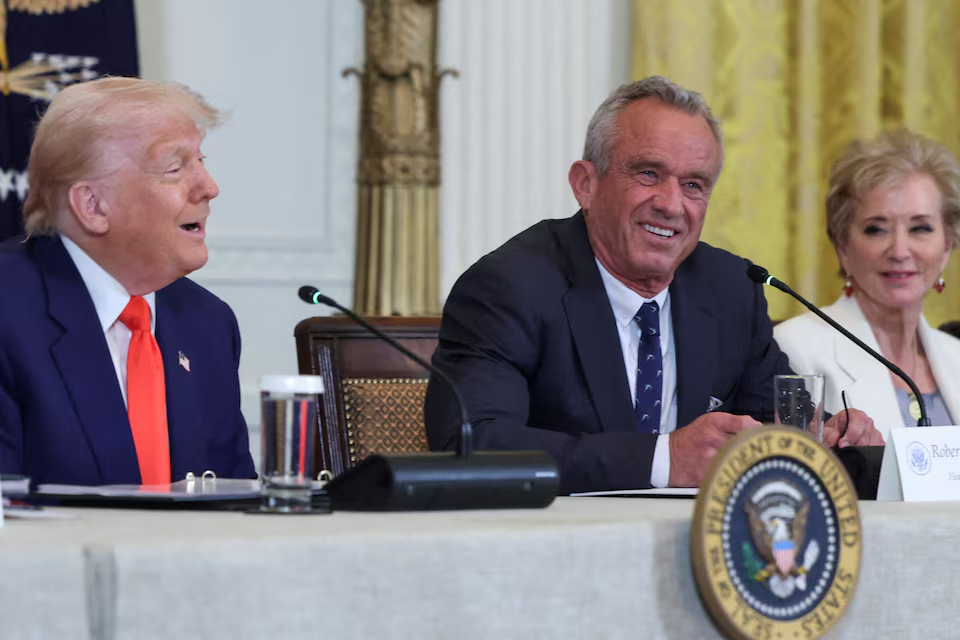U.S. Current Account Deficit Widens Sharply to $450 Billion Amid Tariff-Driven Surge in Imports
- Jun 24
- 3 min read
24 June 2025

In a striking revelation from June 24, the U.S. Bureau of Economic Analysis reported that the current account deficit the broadest measure of the nation’s international financial transactions ballooned to a record $450.2 billion in the first quarter of 2025, a 44.3% increase from the revised $312 billion in Q4 of 2024.
This dramatic widening reflected several compounding forces. First, American businesses accelerated import demand in Q1, front-loading shipments of goods particularly pharmaceuticals, dentistry supplies, non-monetary gold, and key consumer electronics to preemptively sidestep President Trump’s escalating import tariffs.
Import values reached a historic $1 trillion, with the goods deficit alone expanding to $466 billion an unparalleled milestone. In contrast, goods exports grew modestly by $21.1 billion to $539 billion, buoyed by sales of capital equipment like civilian aircraft and computer accessories. The services side of the ledger saw a decline, with exports weakening as sectors like travel and management consulting contracted.
In GDP terms, the current account deficit represented 6% of national output, a level not seen since the third quarter of 2006. Economists warn that such persistent external imbalances, coupled with rising federal debt, pose medium-term risks to the dollar’s dominant reserve-currency role.
The sharp increase in Q1 imports, particularly goods, took a dramatic turn in April, dropping by nearly 20% month-on-month as the impulsive front-loading subsided . That retreat may help temper the deficit in Q2, though the trade gap remains structurally elevated due to tariff-induced volatility.
Underlying this fluctuation was aggressive tariff policy. As duties on Mexican, Canadian, Chinese, and EU imports intensified early in the year, businesses scrambled to beat the deadline, amassing inventories. Analysts from Morgan Stanley, Goldman Sachs, and J.P. Morgan underscore that this import surge alone carved approximately 4.8 percentage points from Q1 GDP, pushing growth into contraction territory .
Yet caution is warranted in interpreting such headline figures, economists note. The structural trade shift may prove temporary, and strong consumer-demand trends could help buffer the economic outlook . Personal consumption remained robust in Q1, suggesting that domestic activity remains resilient even amid global trade noise .
Nevertheless, the Federal Reserve remains cautiously observant. Enhanced deficit metrics aligned with trade-driven inflation complicate the Fed’s dual objectives of promoting full employment and stable prices. As Atlanta Fed President Raphael Bostic noted on the same day, the central bank has room to wait before cutting interest rates, given inflation pressures exacerbated by tariffs and sustained import costs .
Looking forward, economic forecasts predict a strategic rebound. Imports are expected to moderate, easing the current account strain. Exports of aircraft and industrial equipment could continue supporting growth. Still, the sustainability of the U.S. external deficit will hinge on tariff negotiations, trade diplomacy, and whether domestic producers can ramp up supply in key sectors .
In sum, the quarter’s record deficit illuminates how national fiscal choices tariffs above all ripple through trade balances and GDP calculations. For policymakers and investors, the pressing questions remain: Is this a temporary aberration triggered by trade policy or a turning point reflecting underlying competitiveness challenges? Fiscal and monetary responses in the months ahead, particularly from the Fed and Treasury, will be critical barometers of macroeconomic stability.
The Q1 current account report paints a clear challenge: global trade strategies, domestic demand, and fiscal discipline must align to support long-term economic resilience. After all, a $450 billion annual deficit is more than a number, it’s a signal.



Comments